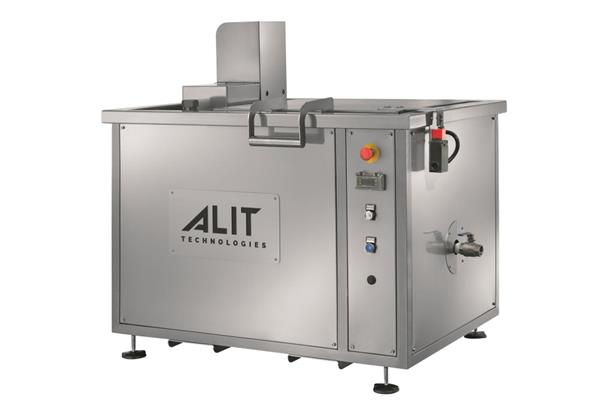
The new system developed by ALIT offers customers an efficient, rapid and space-saving paint stripping solution.
ALIT Technologies has recently presented the paint stripping machine FASTRIP T2-120 MIX, a more compact evolution of the T2 system specifically designed to offer customer an effective and rapid paint removal without covering too much space in the coating line.
Usually, any manufacturer coating metal parts in-house needs to paint strip the frames or hooks used for hanging operations and any defectively painted workpieces. Based in San Bonifacio (Italy), the international manufacturer of machines and products for the surface treatment of metals has then launched the new technology of the T2 range in order to provide an efficient and space-saving paint stripping solution.
“ALIT TECHNOLOGIES has developed FASTRIP T2-120 MIX based on its many years of experience in the paint stripping industry. This machine does not use ultrasound, as the mechanical action of the paint stripper on the parts is ensured by the hydrostatic thrust generated by the mixer. The fact that ultrasound has been replaced by a mixer is precisely what distinguishes FASTRIP T2-120 MIX from our top-of-the-line model FASTRIP T2-100,” has stated Loris Rossi, the CEO of ALIT Technologies.
With FASTRIP T2-120 MIX, the paint stripping activity is performed by manually immersing the basket containing the workpieces in a tank with a liquid paint stripping solution that is heated and kept under constant agitation through a special paddle mixer. At the end of the paint stripping cycle, the basket containing the parts is removed manually from the process tank and placed above it to allow dripping. After a rinse, the parts can be reprocessed normally.
“This makes the former a quieter machine that can also operate with a more polluted paint stripper. The absence of ultrasound also allows for the use of electronic components that are less sensitive to the heat developed during normal machine operation. Overall, these choices have resulted in the design of an extremely robust, reliable, safe, and well-functioning system,” has concluded Rossi.